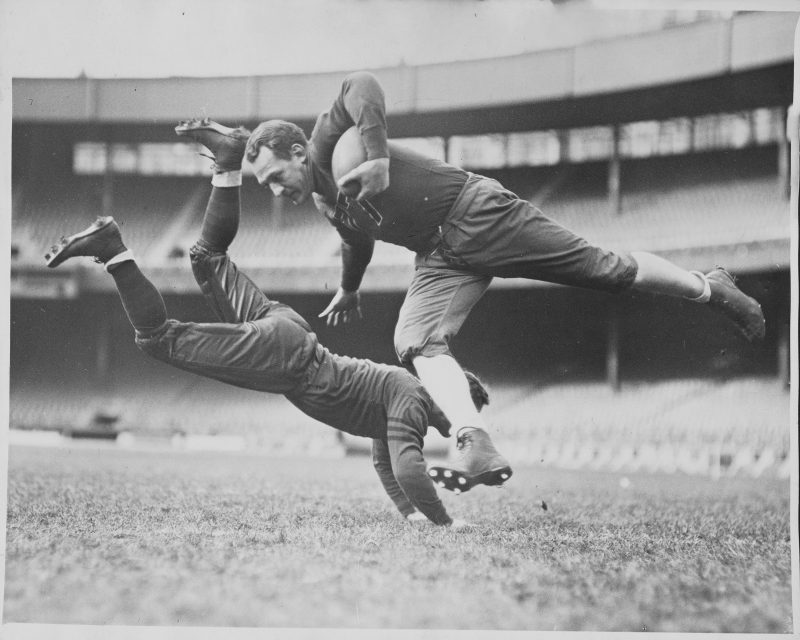Years later, when he was living in Upstate New York, the sports writer W. C. Heinz recalled his first vision of Red Grange. It was in a dank auditorium at school, where kids paid ten cents to see movies. The projector whirred. There was music. The screen filled with light and there was the Galloping Ghost, a University of Illinois halfback, so named because whenever a player tried to tackle him, he was gone.
It was one of the first films Heinz had ever seen, so for him it took on the aspect of a dream: Red Grange camps under a kickoff, waiting for the football, then he’s got it and heads upfield. He cuts as he runs—slowing, feinting, speeding up, dodging tackler after tackler. The camera moves close, a leather helmet framing Red’s cheeks and eyes. Even as an adolescent he had a serious, workingman’s face. He cruises by the last defender, lowers his shoulder, and runs at the camera.
The first book I remember really loving was The Red Grange Story: The Autobiography of the Galloping Ghost. It was less the words that captured me than the pictures, black-and-white shots that chronicled each step in his legendary career: Red as a young man in a Chicago suburb; Red at the University of Illinois; Red as a pro in a leather helmet; Red in a snap-brim cap and a floor-length raccoon coat that portended the fur coat of the great Joe Namath. Those images suggested an antique era, the nightlife of another country. How big was he? The morning after Garland Grange caught a touchdown for the Bears, the Chicago Tribune ran the headline: red grange’s brother beats giants on a pass.
Red Grange, America’s first pro football star, was born in western Pennsylvania in 1903, in an Appalachian town where his father was a lumberjack, a brawny man in flannel. When Red was nine, his mother died. The family moved to Wheaton, Illinois. Red’s father became a police officer—the only police officer in Wheaton. The demands of the position meant that Red was without supervision a lot of the time. His afternoons were spent in the street, running among clothesline tenements, getting his first taste. “It wasn’t football we played, but something like it,” he said. “We called it, ‘Run sheep, run.’ There would be two or three guys in the middle of a field, tacklers, and a goal at either end; the goals were sidewalks. All of us would line up on one goal and on the signal run to the other. If you were tackled, you’d have to stay out in the middle and become a...
You have reached your article limit
Sign up for a digital subscription and continue reading all new issues, plus our entire archives, for just $1.50/month.
Already a subscriber? Sign in





